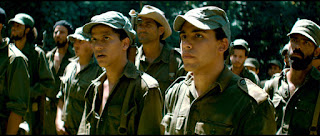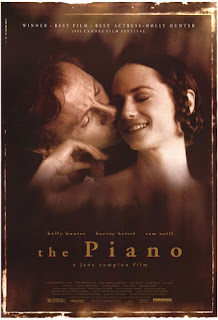September 30th: CHE: THE ARGENTINE
NOTE: this film will be screened in the high-definition Blu-ray format.
Ernesto "Che" Guevara teams up with Fidel Castro in a revolution to overthrow Cuba's dictator Fulgencio Batista.
Oscar-winning actor Benicio Del Toro became fascinated with the story of Guevara, and with producer Laura Bickford optioned a biography by Jon Lee Anderson. Del Toro spent seven years doing research, including reading through Che's personal writings and photography, as well as interviewing relatives and fellow revolutionaries from the period. The pair contacted esteemed filmmaker Terrence Malick (Tree of Life) due to his own research on Che in the 1960s, and they began collaborating on a screenplay with an intention to direct.
After Malick's withdrawal due to a delay in financing, Del Toro's Traffic director Steven Soderbergh (already involved as a producer) was asked to take the reins. He soon had the idea of expanding the planned story of Che's failed Bolivian campaign to include his earlier triumph in Cuba as well as his famous address to the United Nations General Assembly in-between. Soderbergh eventually made the decision to make two separate films, as well as changing the spoken language from English to Spanish, and financing was restructured and became more difficult.
The two films were shot back-to-back, but with distinctly different visual approaches. Soderbergh, who acts as his own cinematographer, decided on using the brand new RED One digital camera, still only a prototype. Part One of the story, subtitled The Argentine, was shot in the widescreen Cinemascope format, with a more elegant, classic aesthetic.
Most of the film was shot chronologically in sequence, with Campeche, Mexico substituted for Cuba (restricted from location shooting due to the U.S. embargo), and the rare opportunity to film at the U.N. Headquarters, right before it was renovated. Soderbergh's efficiency and intelligence allowed him to complete both parts of Che in less than three months, though the experience proved to be exhausting and ultimate demoralizing, the director making a few smaller projects before announcing his retirement from feature filmmaking.
Che premiered in a single four-hour version at the Cannes Film Festival to a divisive reception, but earned the Best Actor award for Del Toro. The film opened in a limited release "roadshow" version with intermission and a printed program booklet. It was then released wide as the planned two separate films. Critics were mixed, some giving high praise while others finding it too clinical and lacking in passion, both results of Soderbergh's attempt to subvert the standard biopic approach. Protests occurred in Miami due to the large anti-Castro Cuban population there. Many questioned why the filmmakers neglected to include scenes of post-revolution torture and executions.
Running time for Part One: The Argentine is approx 2 hrs, 15 min.
Oscar-winning actor Benicio Del Toro became fascinated with the story of Guevara, and with producer Laura Bickford optioned a biography by Jon Lee Anderson. Del Toro spent seven years doing research, including reading through Che's personal writings and photography, as well as interviewing relatives and fellow revolutionaries from the period. The pair contacted esteemed filmmaker Terrence Malick (Tree of Life) due to his own research on Che in the 1960s, and they began collaborating on a screenplay with an intention to direct.
After Malick's withdrawal due to a delay in financing, Del Toro's Traffic director Steven Soderbergh (already involved as a producer) was asked to take the reins. He soon had the idea of expanding the planned story of Che's failed Bolivian campaign to include his earlier triumph in Cuba as well as his famous address to the United Nations General Assembly in-between. Soderbergh eventually made the decision to make two separate films, as well as changing the spoken language from English to Spanish, and financing was restructured and became more difficult.
Joining Del Toro in the cast are Oscar Isaac (Inside Llewyn Davis), Julia Ormond (Mad Men), Rodrigo Santoro (300, Lost), and Demien Bichir (A Better Life) as Fidel Castro. A large portion of the crew and production team were Spanish or Latin American, including score composer Alberto Iglesias, a frequent Pedro Almodovar collaborator.
The two films were shot back-to-back, but with distinctly different visual approaches. Soderbergh, who acts as his own cinematographer, decided on using the brand new RED One digital camera, still only a prototype. Part One of the story, subtitled The Argentine, was shot in the widescreen Cinemascope format, with a more elegant, classic aesthetic.
Che premiered in a single four-hour version at the Cannes Film Festival to a divisive reception, but earned the Best Actor award for Del Toro. The film opened in a limited release "roadshow" version with intermission and a printed program booklet. It was then released wide as the planned two separate films. Critics were mixed, some giving high praise while others finding it too clinical and lacking in passion, both results of Soderbergh's attempt to subvert the standard biopic approach. Protests occurred in Miami due to the large anti-Castro Cuban population there. Many questioned why the filmmakers neglected to include scenes of post-revolution torture and executions.
Running time for Part One: The Argentine is approx 2 hrs, 15 min.










Comments
Post a Comment